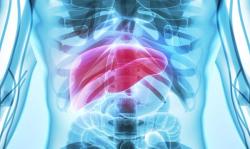
OR WAIT null SECS
People Who Inject Drugs More Likely to Have Specific Hepatitis C Virus Genotypes
There was an 88.12% cure rate in the intention-to-treat analysis.
Patients with hepatitis C virus (HCV) who inject drugs are more likely to present with genotype 1 according to a new analysis in notoriously difficult to treat communities.1
A team, led by Anne Loarec, Médecins Sans Frontières (MSF), systematically genotyped hepatitis C genotypes in Mozambique.
HCV Programs in Africa
Implementing HCV programs can be difficult, especially for linking key populations to care.
In Maputo, Médecins Sans Frontières and Mozambique's Ministry of Health first implemented HCV treatment in 2016, as well as harm reduction activities in 2017.
However, there remain challenges in these areas.
“Most clinical trials thus far have been conducted in high-income countries, potentially leading to biased estimates of treatment efficacy, given that such studies may neglect [genotypes] and subtypes present in [lower to moderate income countries],” the authors wrote. “Furthermore, wider implementation of HCV programs reveal the diversity of population affected by HCV, linked with varying risk factors. In a similar way to HIV, stigma is a greater burden for some HCV subpopulations, such as people who use drugs.”
Hepatitis C Programs
In the study, the investigators retrospectively analyzed routine data for 202 patients between December 2016 and July 2021 and systemically requested genotype data up to 2018 and subsequently in cases of treatment failure. The team assessed sustainable virological responses 12 weeks after the conclusion of treatment with sofosbuvir-daclatasvir or sofosbuvir-velpatasvir.
Of the patient population, 78.71% (n = 159) were male, with a median age of 41 years.
The investigators identified several risk factors, including drug use (70.29%; n = 142).
Genotyping
The results from 111 genotyping samples show genotype 1 was the most predominant genotype (78.37%; n = 87).
In addition, 16 patients presented with genotype 4 with various subtypes.
Individuals who use drugs, as well as patients coinfected with HIV, were more likely to present a genotype 1 as opposed to other genotyping.
In the intention-to-treat analysis, the investigators showed an 88.12% (n = 89) cure rate.
There were 19 patients in the study who were treated with opioid substation therapy. This particular group had a 100% cure rate, compared to a 59.37% (n = 38) cure rate for initiated ones without the substation therapy (P <0.001).
After conducting resistance testing, the investigators found NS5A resistance-associated substitutions in 7 patients of the 9 patients tested.
They also identified NS58 ones in 1 patient.
“We found varied genotypes, including some identified as difficult-to-treat subtypes. People who used drugs were more likely to present genotype 1,” the authors wrote. “In addition, opioid substitution therapy was key for these patients to achieve cure. Access to second-generation direct-acting antivirals (DAAs) and integration of HCV care with harm reduction are crucial to program effectiveness.”
References:
Loarec, A., Gutierrez, A. G., Muvale, G., Couto, A., Nguyen, A., Yerly, S., Pinto, Y., Madeira, N., Gonzales, A., Molfino, L., Ciglenecki, I., & Antabak, N. T. (2023). Hepatitis C treatment program in Maputo, Mozambique, the challenge of genotypes and key populations: A 5‐year retrospective analysis of routine programmatic data. Health Science Reports, 6(4). https://doi.org/10.1002/hsr2.1165
Related Content:


